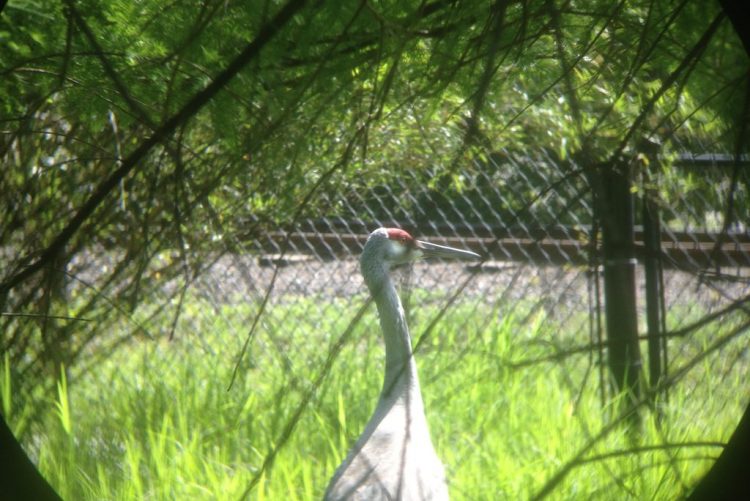
Gruidae Facts
- Fifteen species in four genera.
- Species found on every continent except Antartica
- Four species are listed as Endangered or Critically Endangered by IUCN
- The Wattled crane is the heaviest crane weighing up to 20 lbs
- The Demoiselle crane is the smallest crane
Gruidae- Cranes
Cranes are a family of long-legged,long-necked birds.
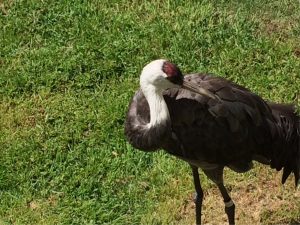
Grus monocha- Hooded Crane
The hooded crane (Grus monacha) is a small, dark crane. It has a grey body. The top of the neck and head is white, except for a patch of bare red skin above the eye. It is one of the smallest cranes, but is still a fairly large bird, at 1 m (3.3 ft) long, a weight of 3.7 kg (8.2 lbs) and a wingspan of 1.87 m (6.2 ft).
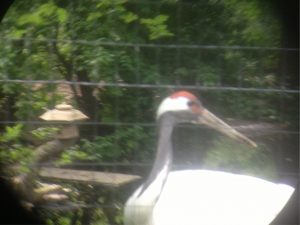
Grus japonensis- Red-crowned Crane
This highly endangered Crane is revered in Japan. Adult red-crowned cranes are named for a patch of red bare skin on the crown, which becomes brighter during mating season. Overall, they are snow white in color with black on the wing secondaries, which can appear almost like a black tail when the birds are standing, but the real tail feathers are actually white.
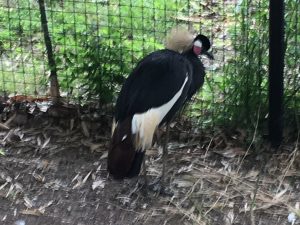
Balearica pavonina
Black crowned Crane
The black crowned crane (Balearica pavonina) is a bird in the crane family Gruidae. It occurs in dry savannah in Africa south of the Sahara, although in nests in somewhat wetter habitats. There are two subspecies: B. p. pavonina in the west and the more numerous B. p. ceciliae in east Africa.
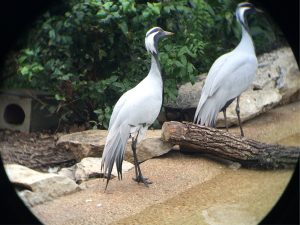
Grus virgo
Demoiselles Crane
The demoiselle crane (Grus virgo) is a species of crane found in central Eurasia, ranging from the Black Sea to Mongolia and North Eastern China. There is also a small breeding population in Turkey. These cranes are migratory birds. Birds from western Eurasia will spend the winter in Africa whilst the birds from Asia, Mongolia and China will spend the winter in the Indian subcontinent. The bird is symbolically significant in the Culture of India and Pakistan, where it is known as Koonj
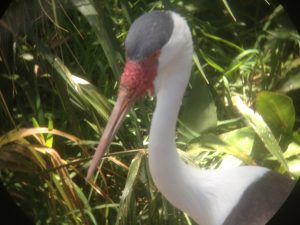
Grus carunculata
Whooping crane
Like most cranes the social structure of the Wattled Crane is a breeding pair and its young. However during non-breeding season flocks of up to ten individuals may be seen. This species is more dependent on the wetlands than any other species in the family. Although wattled cranes can be found in eleven countries the largest concentration is in the Okavango Delta in Botswana. Therefore it is much more susceptible to changes to the river systems in the area. Construction of dams for hydroelectric plants is a major threat to the species. This species is protected under the Agreement on the Conservation of African-Eurasian Migratory Waterbirds
Wattled cranes forage in shallow water. Much more herbivorous than other cranes the main food is tubers. Aquatic insects are eaten to supplement the diet.
Fact Sheet
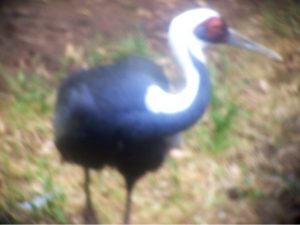
Antigone vipio
White-naped crane
The white-naped crane (Antigone vipio) is a bird of the crane family. It is a large bird, 112–125 cm (44–49 in) long, approximately 130 cm (4.3 ft) tall and weighing about 5.6 kg (12 lb) with pinkish legs, grey and white striped neck, and a red face patch..
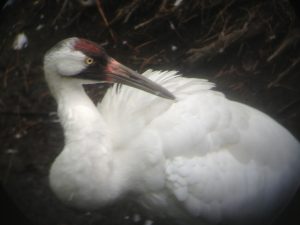
Grus americana
Whooping crane
The whooping crane (Grus americana), the tallest North American bird, is an endangered crane species named for its whooping sound. In 2003, there were about 153 pairs of whooping cranes. Along with the sandhill crane, it is one of only two crane species found in North America. The whooping crane’s lifespan is estimated to be 22 to 24 years in the wild. After being pushed to the brink of extinction by unregulated hunting and loss of habitat to just 21 wild and two captive whooping cranes by 1941, conservation efforts have led to a limited recovery. As of February 2015, the total population was 603 including 161 captive birds.
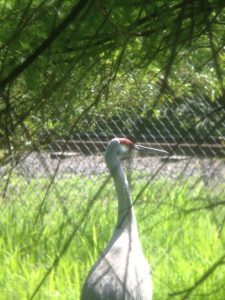
Antigone canadensis
Sandhill Crane
The sandhill crane (Antigone canadensis) is a species of large crane of North America and extreme northeastern Siberia. The common name of this bird refers to habitat like that at the Platte River, on the edge of Nebraska‘s Sandhills on the American Plains. This is the most important stopover area for the nominotypical subspecies, the lesser sandhill crane(Antigone canadensis canadensis), with up to 450,000 of these birds migrating through annually.
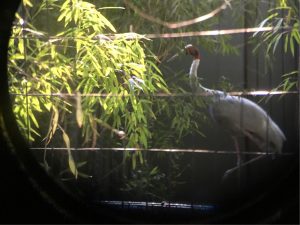
Antigone antigone
Sarus Crane
The sarus crane (Antigone antigone) is a large non-migratory crane found in parts of the Indian Subcontinent, Southeast Asia and Australia. The tallest of the flying birds, standing at a height of up to 1.8 m (5 ft 11 in),[3] they are conspicuous and iconic[4] species of open wetlands. The sarus crane is easily distinguished from other cranes in the region by the overall grey colour and the contrasting red head and upper neck. They forage on marshes and shallow wetlands for roots, tubers, insects, crustaceans and small vertebrate prey.
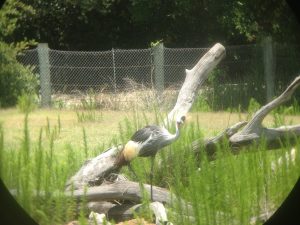
Balearica regulorem
Grey-crowned Crane
The grey crowned crane is closely related to the black crowned crane, and the two species have sometimes been treated as the same species. The two are separable on the basis of genetic evidence, calls, plumage and bare parts, and all authorities treat them as different species today
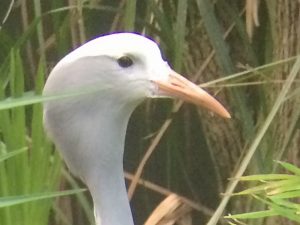
Grus paradisea
Blue crane
The Blue Crane, also known as the Stanley is found only in the southern part of Africa. Over 99% of its population is found in South Africa. It is the national bird of South Africa.
The population is declining. The major threats are direct poisoning and habitat loss. Collisions with power lines are increasing and land being used for agriculture is destroying this species habitat.
Fact Sheet